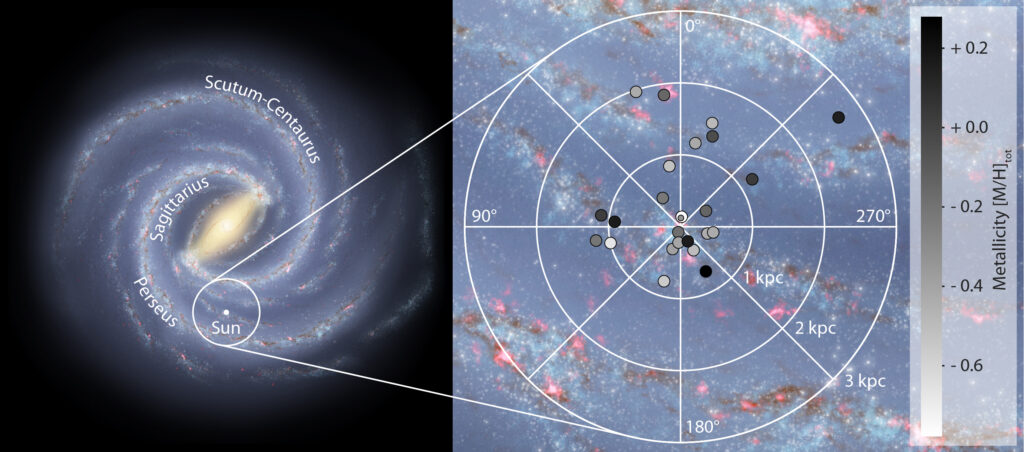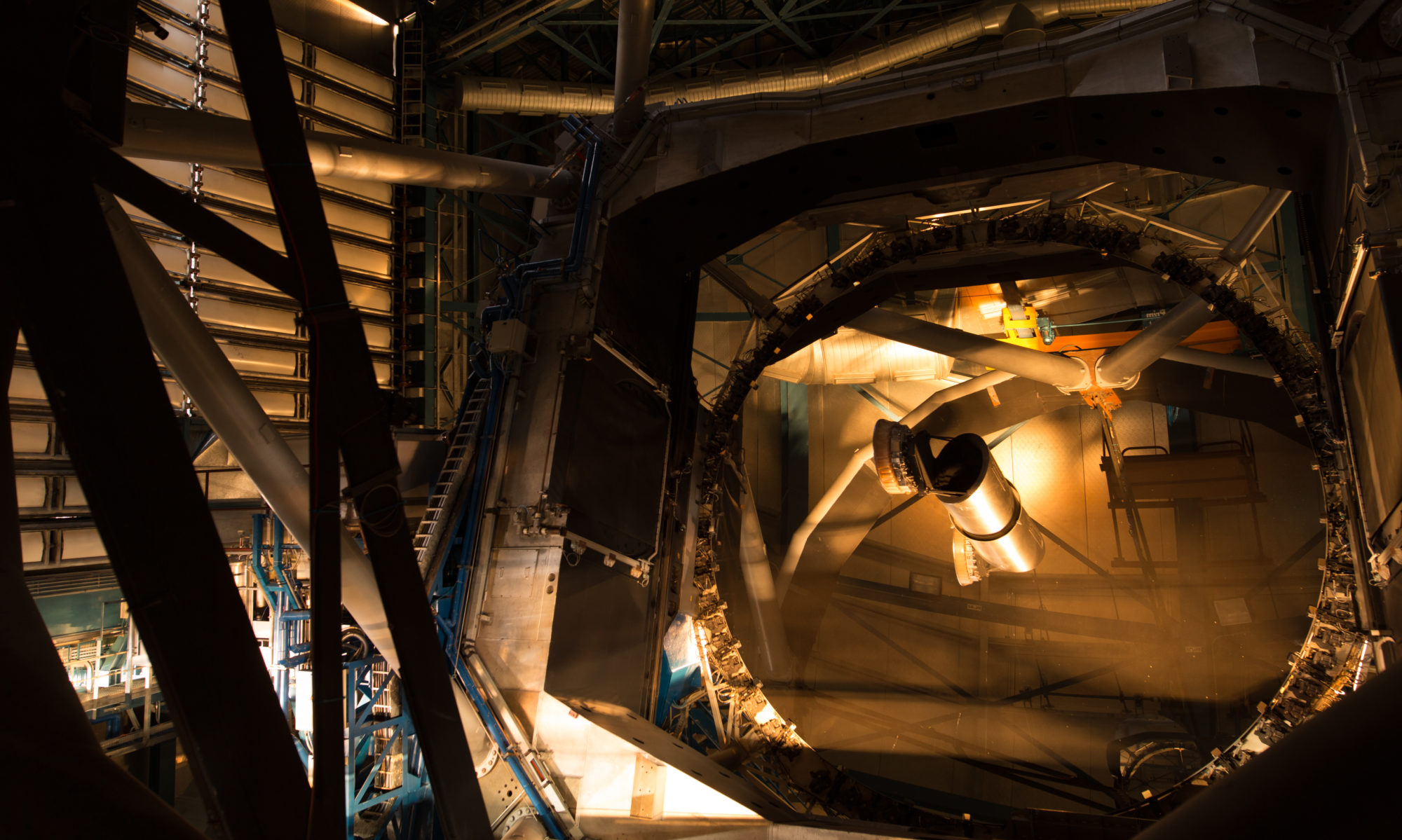Published in Nature: https://www.nature.com/articles/s41586-021-03780-0
Accepted (non-final) version**: full PDF
Annalisa De Cia (University of Geneva, CH), Edward B. Jenkins (Princeton University, USA), Andrew J. Fox (Space Telescope Science Institute, USA), Cédric Ledoux ( European Southern Observatory, Chile), Tanita Ramburth-Hurt, Christina Konstantopoulou (University of Geneva, CH), Patrick Petitjean( Institut d’Astrophysique de Paris, FR), Jens-Kristian Krogager(University of Geneva, CH)
Abstract: The Interstellar Medium (ISM) comprises gases at different temperatures and den- sities, including ionized, atomic, molecular species, and dust particles. The neutral ISM is dominated by neutral hydrogen and has ionization fractions up to 8%. The concentration of chemical elements heavier than helium (metallicity) spans orders of magnitudes in Galactic stars, because they formed at different times. Instead, the gas in the Solar vicinity is assumed to be well mixed and have Solar metallicity in traditional chemical evolution models. The ISM chemical abundances can be accu- rately measured with UV absorption-line spectroscopy. However, the effects of dust depletion, which removes part of the metals from the observable gaseous phase and incorporates it into solid grains, have prevented, until recently, a deeper investigation of the ISM metallicity. Here we report the dust-corrected metallicity of the neutral ISM measured towards 25 stars in our Galaxy. We find large variations in metallicity over a factor of 10 (with an average 55 ± 7% Solar and standard deviation 0.28 dex) and including many regions of low metallicity, down to ∼ 17% Solar and possibly below. Pristine gas falling onto the disk in the form of high-velocity clouds can cause the observed chemical inhomogeneities on scales of tens of pc. Our results suggest that this low-metallicity accreting gas does not efficiently mix into the ISM, which may help us understand metallicity deviations in nearby coeval stars.

** This version of the article has been accepted for publication on Nature, after peer review, but is not the Version of Record and does not reflect post-acceptance improvements, or any corrections. The Version of Record is available at: http://dx.doi.org/10.1038/s41586-021-03780-0. Use of this Accepted Version is subject to the publisher’s Accepted
Manuscript terms of use https://www.springernature.com/gp/open-research/policies/acceptedmanuscript-terms
